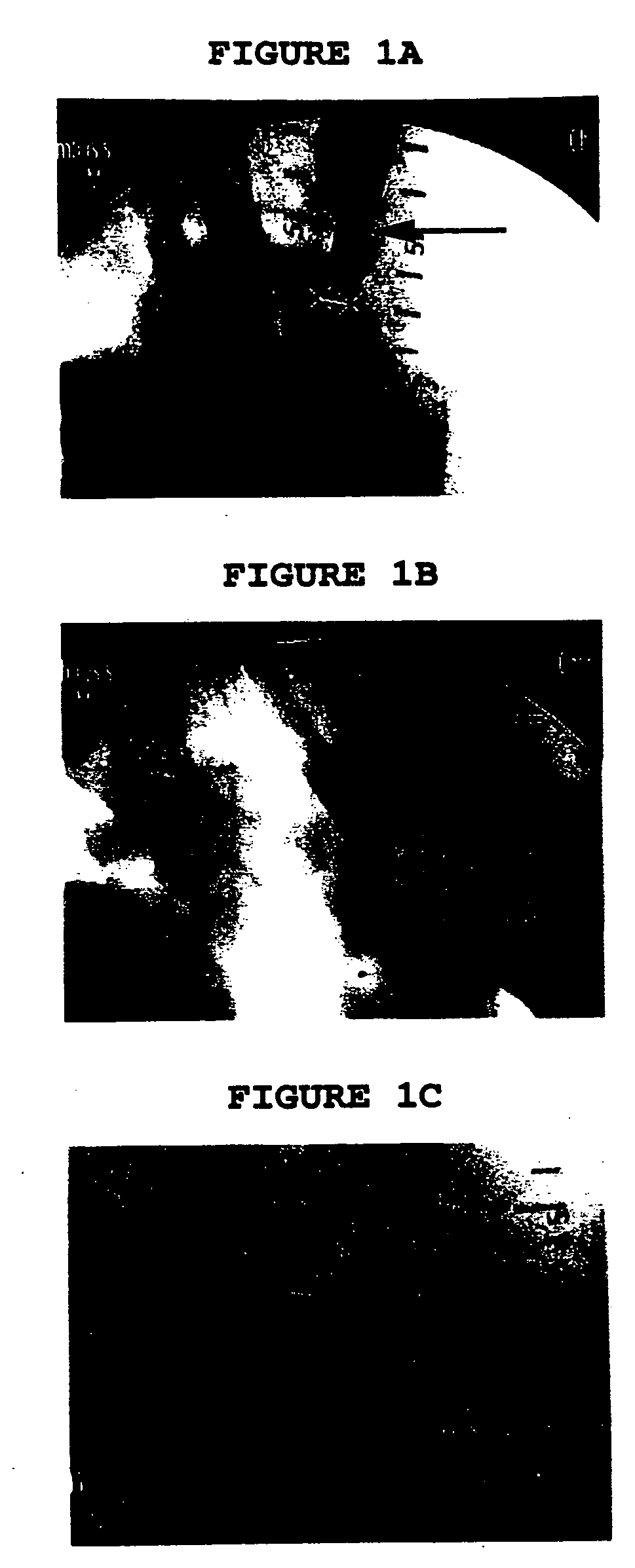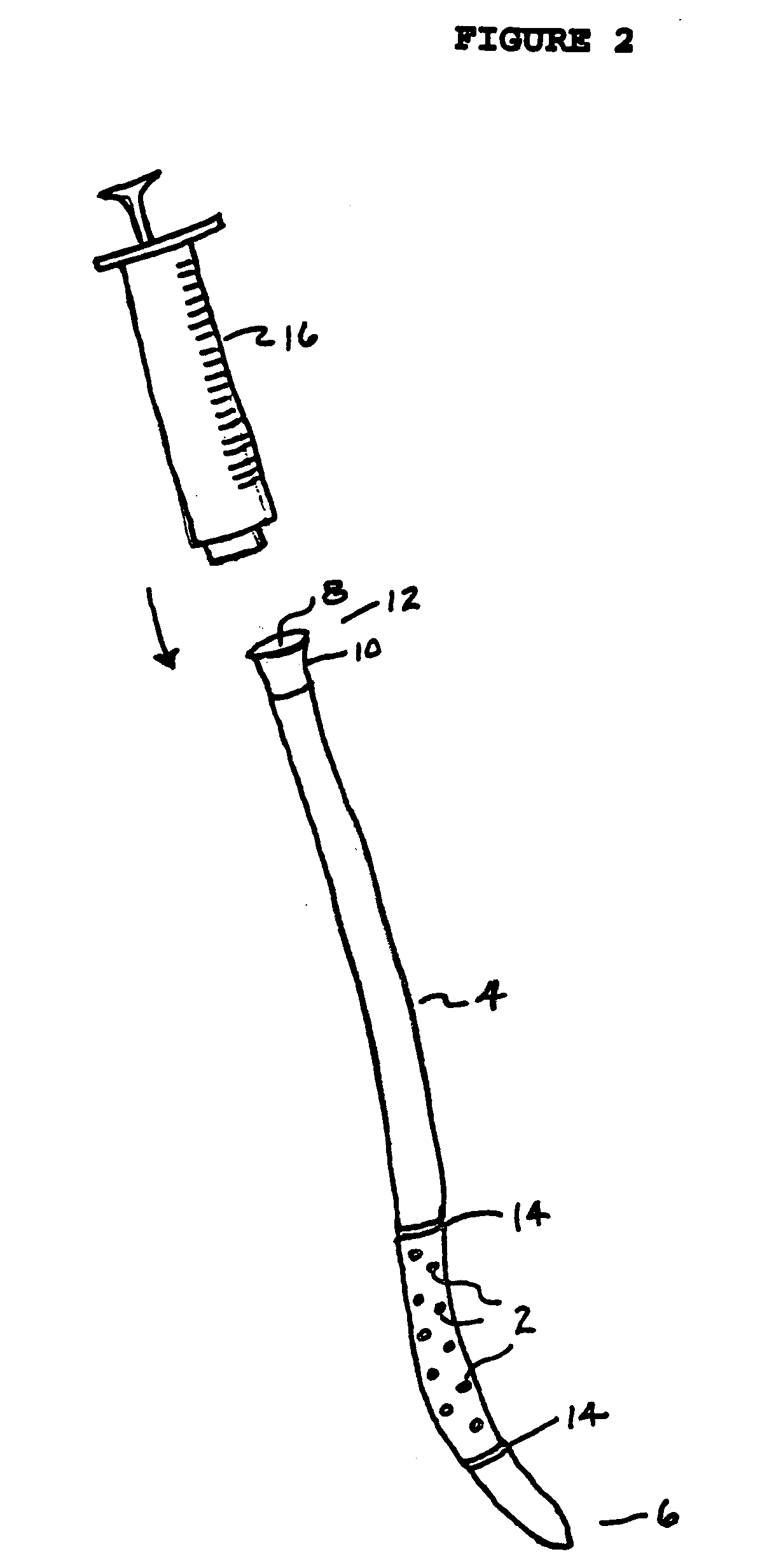Method for treatment of indwelling catheter occlusion using fibrinolytic metalloproteinases
a fibrinolytic and metalloproteinase technology, applied in the direction of catheters, extracellular fluid disorders, peptide/protein ingredients, etc., can solve the problems of limb or life-threatening diseases, degrade other structural proteins, and potentially toxic, and achieve the effect of facilitating the lysing of the clo
- Summary
- Abstract
- Description
- Claims
- Application Information
AI Technical Summary
Benefits of technology
Problems solved by technology
Method used
Image
Examples
example 1
Thrombolysis in Subacute Thrombosis of the Adult Pig Common Carotid Artery
[0079] NAT was been studied in a model of subacute thrombosis of the carotid artery in adult pigs, averaging 75 kg in body weight, at a contract laboratory (Charles River Laboratories, Southbridge, Mass.). The intent of this study was to establish the fibrinolytic activity of NAT in a thrombosis model which is relevant to peripheral artery occlusion in humans.
[0080] In this animal model, the carotid artery was thrombosed along its entire length (approximately 20 centimeters from origin at the aorta to the carotid bifurcation) by a combination of balloon injury, thrombin and stasis. The size of the thrombus approaches the size of thrombus encountered clinically in humans with peripheral arterial occlusion. After successful thrombosis, the animal was allowed to recover for a period of four days. A four-day period was selected to allow extensive cross-linking of fibrin, remodeling of thrombus, and infiltration ...
example 2
Selection of PRO Catheters and Pulse-Spray Delivery
[0091] In the clinical management of peripheral arterial occlusion, thrombolytic agents are delivered through catheters which are positioned near or embedded into the thrombus. As shown in FIGS. 2 and 3, there are two types of commonly used catheters.
[0092] One variety, the “side hole” catheter (FIG. 2), has tiny round side holes (2) cut into the catheter (4) near closed distal end 6, and an entry port 8 (for the solution of fibrinolytic metalloproteinase) in mating ring 10 affixed at proximal end 12. Catheter 4 is constructed of a flexible, elongated, biocompatible polymer tubing material which is hollow and thin-walled and has a uniform diameter of 2 to 20 French, and preferably 3 to 5 French. The catheter contains two radiopaque markers 14 on the exterior surface near distal end 6 which demarcate the portion of the catheter containing side holes 2. In practice, the catheter is inserted into a surgical opening in the occluded ar...
example 3
Assessment of Drug Delivery Time
[0098] Acute peripheral arterial occlusion is typically treated with plasminogen activators, such as urokinase, delivered as an infusion which is often twenty-four hours in duration, and occasionally as long as forty-eight hours. The lengthy infusion is presumed to maintain a low level of plasmin generation over a prolonged period of time in order to effectively dissolve the occlusive thrombus. As both NAT and fibrolase are fibrinolytic metalloproteinases, such prolonged infusions may not be necessary. To assess whether the delivery rate affects angiographic clot lysis, a fixed 30 mg dose of NAT (roughly 0.4 mg / kg in a 75 kg pig) was delivered using PRO catheters and the pulse spray device. Using 0.1 mL pulse volumes, a 5 mg / mL NAT solution was delivered over six minutes (ten pulses per minute) or over sixty minutes (one pulse per minute). The results are shown in Table 2.
TABLE 2Comparison of Drug Delivery Times for NATDelivered by PRO Catheter and...
PUM
| Property | Measurement | Unit |
|---|---|---|
| concentration | aaaaa | aaaaa |
| concentration | aaaaa | aaaaa |
| molecular weight | aaaaa | aaaaa |
Abstract
Description
Claims
Application Information
 Login to View More
Login to View More - R&D
- Intellectual Property
- Life Sciences
- Materials
- Tech Scout
- Unparalleled Data Quality
- Higher Quality Content
- 60% Fewer Hallucinations
Browse by: Latest US Patents, China's latest patents, Technical Efficacy Thesaurus, Application Domain, Technology Topic, Popular Technical Reports.
© 2025 PatSnap. All rights reserved.Legal|Privacy policy|Modern Slavery Act Transparency Statement|Sitemap|About US| Contact US: help@patsnap.com



